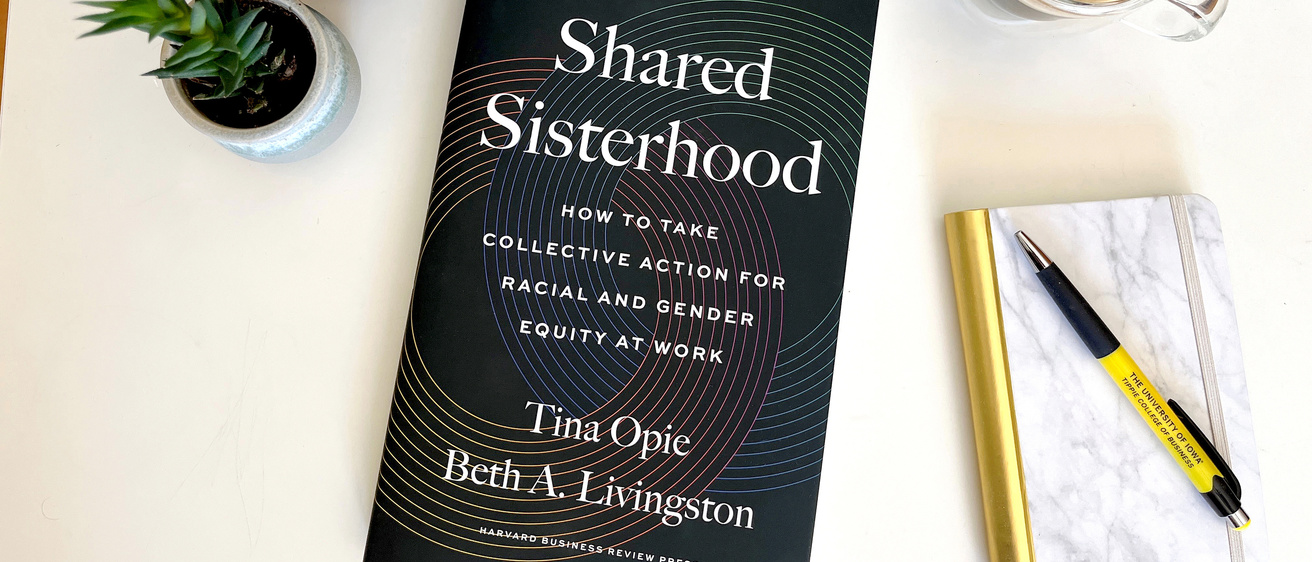In the aftermath of the #MeToo movement, Babson College Associate Professor Tina Opie emailed Tippie’s Beth Livingston and brought up the question: why haven’t Black and white women made larger collective advances in the workplace?
To answer that question, they wrote the book Shared Sisterhood: How to Take Collective Action for Racial and Gender Equity at Work where they examine the barriers preventing workplace colleagues with different racial backgrounds from overcoming their differences and working together for workplace equality.

Often when talking about societal ills like workplace disparities, we try to solve them with individual actions only. If I simply believe the right things—women deserve equal pay—racism is wrong—the rest will somehow sort itself out. As pointed out in Shared Sisterhood, the focus on individual actions throws the responsibility back to the historically marginalized. For example, the proposed solution to pay disparities is often to teach women to stand up for themselves and negotiate more assertively. But as Opie and Livingston point out in study after study, for women who are located within a culture that perpetuates wage inequality, it doesn’t matter how great of a negotiator you are.
The brilliance of the book is its focus not on individual action or societal shifts, but on the interpersonal bridges that need to be built to make real change.
The program for bridge building outlined in the book is based in decades of management research and grounded in the real-world experience of Opie and Livingston working with Black and white colleagues as they engaged in forging authentic, productive workplace relationships. Thus, it’s imminently practical. I appreciated that it accounts for the unique perspectives that women from various racial backgrounds typically bring to the table as they strive to build bridges to colleagues. The authors identify trust, vulnerability, empathy, and risk-taking as key to developing authentic connections that can lead to positive collective action. However, the authors observe that as colleagues embark on these bridging activities, white colleagues may need to focus on developing empathy while historically marginalized colleagues may need to work on developing trust. This is part of the introspective process the authors describe as “dig.”
The results of these dig-to-bridge relationships can be truly powerful in creating positive change. The story of former Google ethical AI team co-leads Timnit Gebru and Margaret Mitchell detailed in the book stood out to me as an example of the power of collective courage in the face of institutional blind spots and past problematic management. In another example, the professional partnership between actresses Octavia Spencer and Jessica Chastain ended up helping them both. When negotiating pay for a movie they were co-starring in, Spencer and Chastain negotiated their salaries together, reportedly resulting in both women being paid substantially more than they were originally offered.
Shared Sisterhood shows that success isn’t a zero-sum game. We are stronger when we build connections based on our values and work together toward common goals.
Amy Kristof-Brown is the Henry B. Tippie Dean and professor of management and entrepreneurship.
Beth Livingston is the Ralph L. Sheets Associate Professor of Industrial Relations in the Department of Management and Entrepreneurship.
Tina Opie is an associate professor of management at Babson College.
DYK: Shared Sisterhood was named one of the Ten Best Business Books of 2022 by Forbes.
This article appeared in the Spring 2023 issue of Tippie Magazine.
